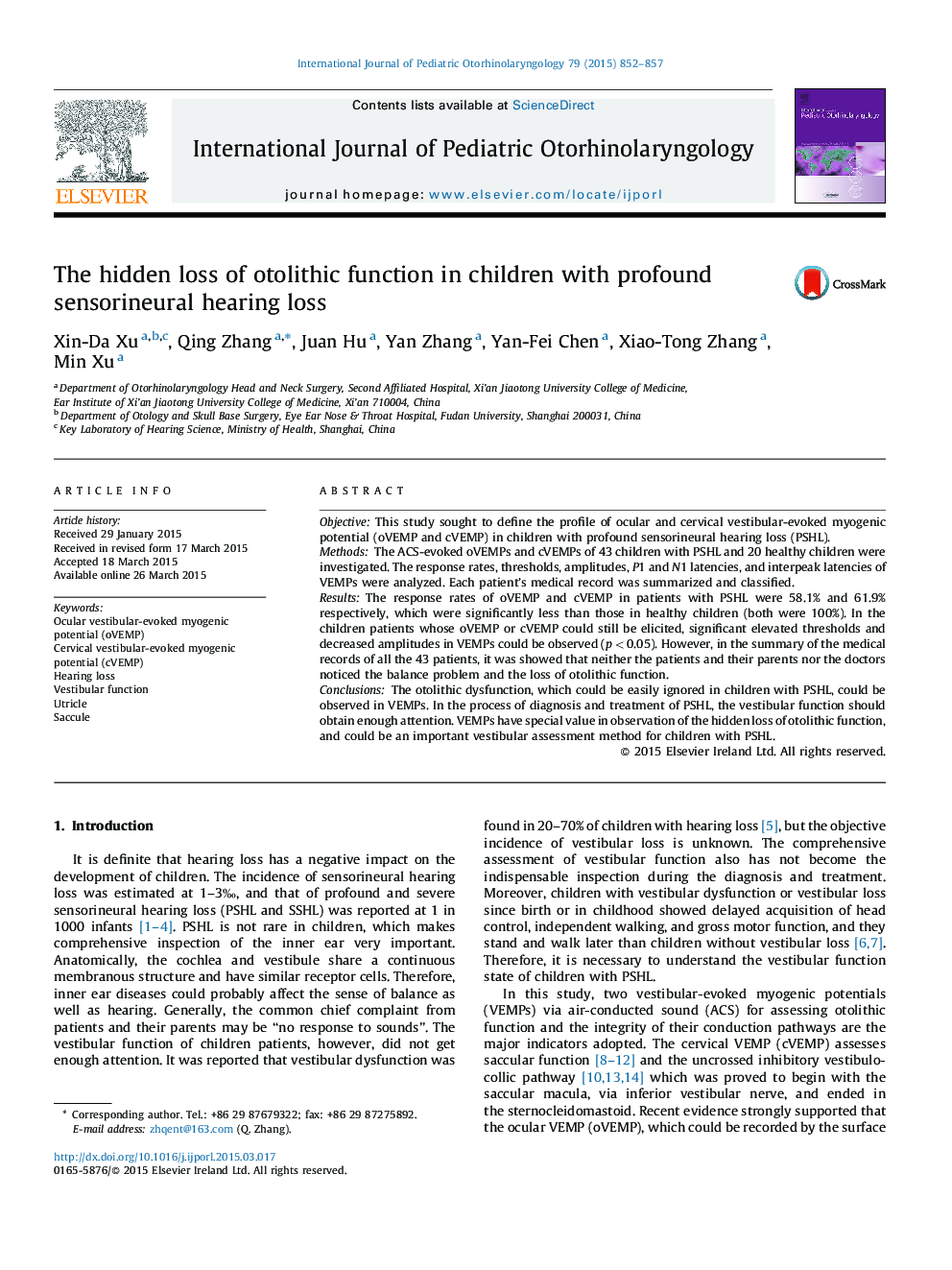| Article ID | Journal | Published Year | Pages | File Type |
|---|---|---|---|---|
| 4112361 | International Journal of Pediatric Otorhinolaryngology | 2015 | 6 Pages |
ObjectiveThis study sought to define the profile of ocular and cervical vestibular-evoked myogenic potential (oVEMP and cVEMP) in children with profound sensorineural hearing loss (PSHL).MethodsThe ACS-evoked oVEMPs and cVEMPs of 43 children with PSHL and 20 healthy children were investigated. The response rates, thresholds, amplitudes, P1 and N1 latencies, and interpeak latencies of VEMPs were analyzed. Each patient's medical record was summarized and classified.ResultsThe response rates of oVEMP and cVEMP in patients with PSHL were 58.1% and 61.9% respectively, which were significantly less than those in healthy children (both were 100%). In the children patients whose oVEMP or cVEMP could still be elicited, significant elevated thresholds and decreased amplitudes in VEMPs could be observed (p < 0.05). However, in the summary of the medical records of all the 43 patients, it was showed that neither the patients and their parents nor the doctors noticed the balance problem and the loss of otolithic function.ConclusionsThe otolithic dysfunction, which could be easily ignored in children with PSHL, could be observed in VEMPs. In the process of diagnosis and treatment of PSHL, the vestibular function should obtain enough attention. VEMPs have special value in observation of the hidden loss of otolithic function, and could be an important vestibular assessment method for children with PSHL.
